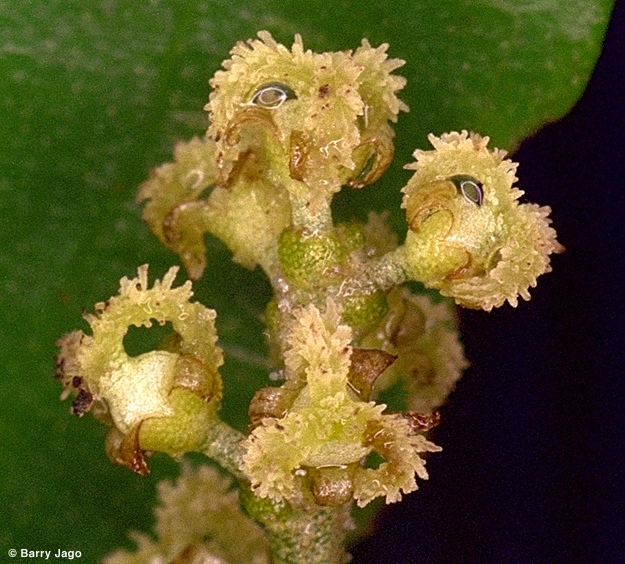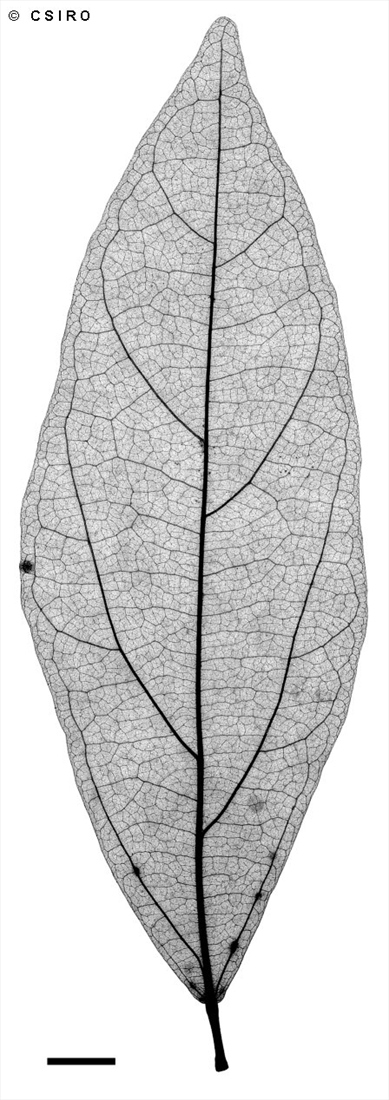Australian Tropical Rainforest Plants - Online edition
Mallotus polyadenos F.Muell.







Mueller, F.J.H. von (1868) Fragmenta Phytographiae Australiae 6: 184. Type: In vicinia sinus marini Rockinghams Bay. Dallachy. Lecto: MEL 708712. Fide Forster (1999).
Kamala
Blaze layering fine and inconspicuous.
Numerous very small yellow glands visible with a lens on the underside of the leaf blade (a few may also be visible on the upper surface). Two to four flat glands generally visible on the upper surface of the leaf blade near its junction with the petiole. Stipules small and inconspicuous. Leaf blades about 7-13 x 4-5.5 cm. Domatia are tufts of hairs.
Capsules +/- glabrous, but clothed in yellowish glands. Seeds +/- globular, about 4-4.5 mm diam.
Cotyledons orbicular, about 13-15 mm diam., with small yellow glands on the upper surface. At the tenth leaf stage: leaf blade obovate, apex acuminate, upper surface glabrous with 2-4 flat glands near its junction with the petiole; both the upper and lower surfaces with numerous yellow glands visible with a lens, numerous yellow glands also occur on petioles, new growth and the stem. Seed germination time 8 days.
Occurs in CYP, NEQ and CEQ. Altitudinal range from near sea level to 800 m. Grows in monsoon forest, drier rain forest and well developed rain forest but also frequently encountered in gallery forest particularly on Cape York Peninsula. Also occurs in New Guinea.
This species may have medicinal properties. The bark of Mallotus polyadenos contains the anti-HIV agent, bergenin.





